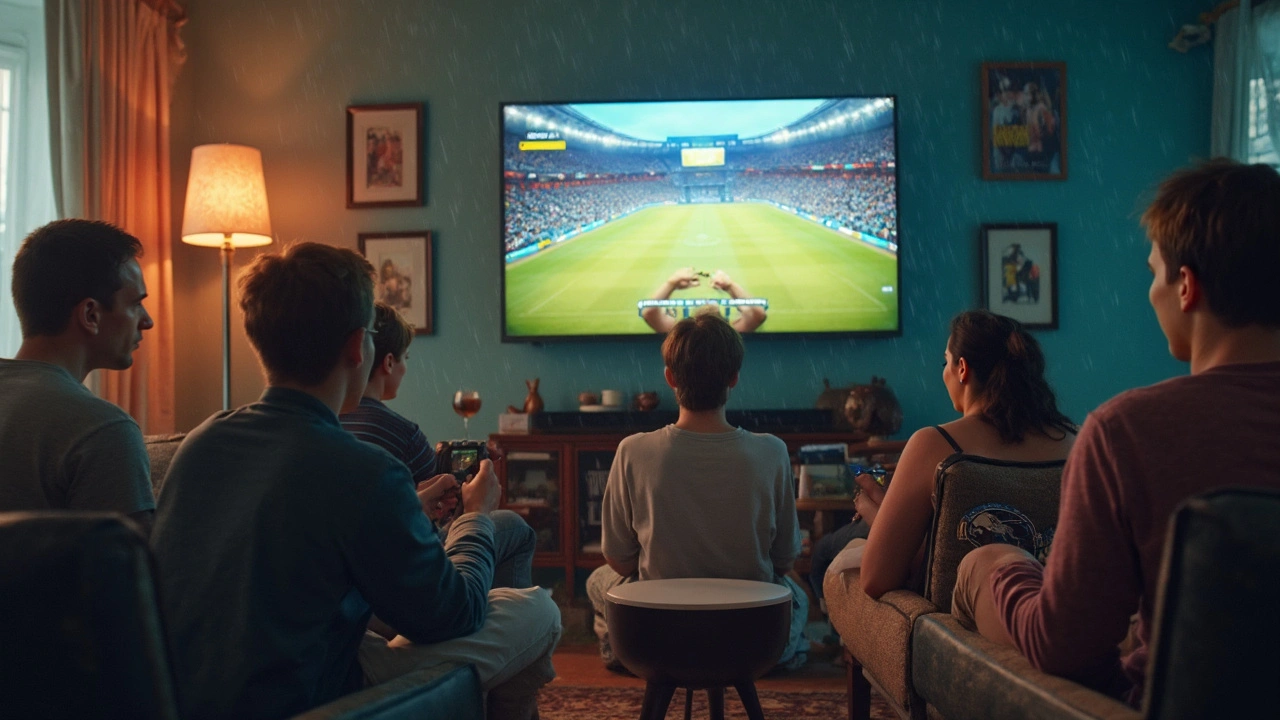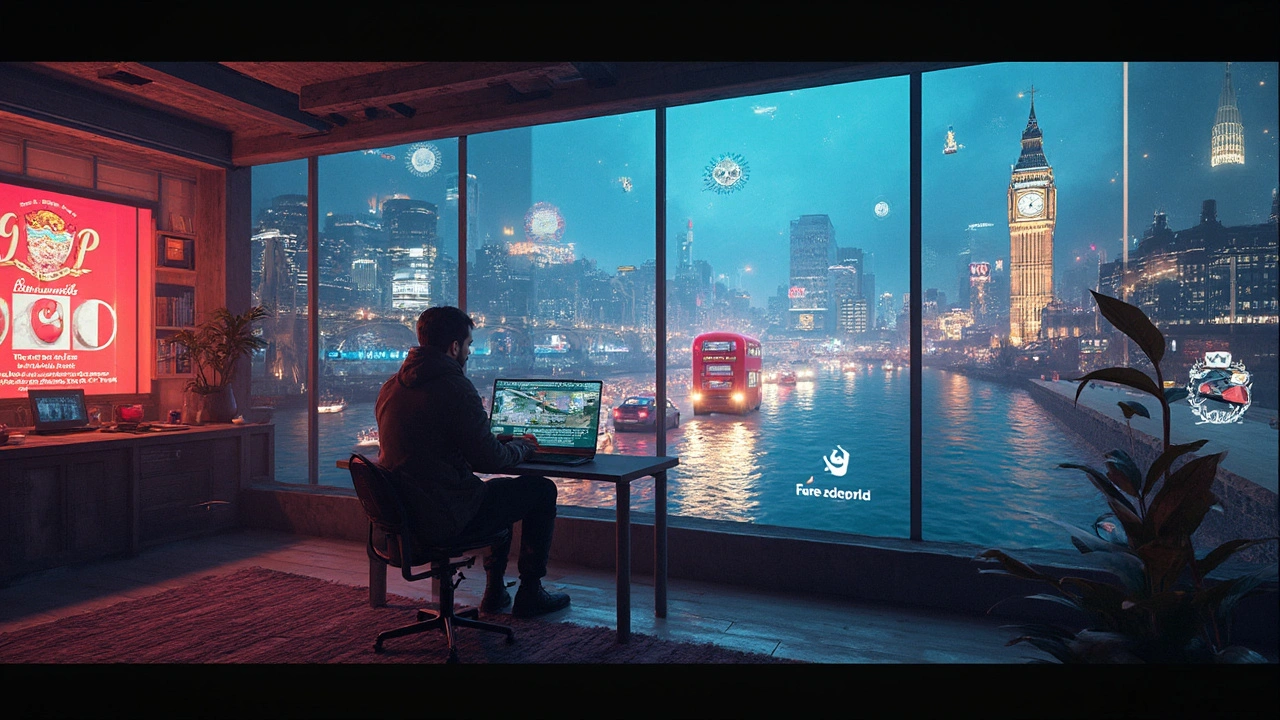In-Game Ads: The Future of Marketing Is Already Here

Picture this: you’re racing through a city in your favorite driving game, and you spot a billboard for your favorite energy drink. It’s not just a random background detail—it’s a real ad, paid for by a brand that knows gamers are glued to their screens. This isn’t a scene from the future. It’s happening right now, and it’s totally changing the world of marketing.
Why waste money on TV spots or banners that people ignore, when millions are hanging out in digital playgrounds every day? In-game ads put brands right in the middle of the action—right where the attention is. It’s not only about more eyeballs, but the right eyeballs: players who are engaged, who notice details, and who talk about what they see.
If you’re a marketer, you’re probably wondering: are these ads just annoying pop-ups? Nope. The smartest campaigns blend seamlessly into the game world, making the ad feel like part of the experience instead of an interruption. Think jerseys in sports games featuring real sponsors, or branded gear your character can actually use. This subtle, interactive approach pays off, as it often leads to higher recall rates and more positive feelings about the brand.
- Why In-Game Ads Are Exploding
- Types of In-Game Ads That Actually Work
- How Brands Get Creative Inside Games
- Practical Tips for Marketers Looking to Dive In
Why In-Game Ads Are Exploding
It’s no secret: gamers are everywhere. In 2024, there were more than 3.3 billion gamers worldwide. That’s way more than the people still watching cable TV. Marketers know where the crowds are, and these days, the crowd is on a console, a PC, or scrolling on a phone. That’s a massive audience that’s diverse—kids, teens, parents, even grandparents are playing games. So, it’s a no-brainer for brands to meet people where they’re actually spending time.
The old ways—banner ads and TV commercials—are easy to skip or block. But in a 3D game? Ads are right in the mix with all the action. Recent studies show that players remember in-game ads, especially when they blend in and don’t interrupt gameplay. Some brands report double the recall rates compared to standard ads on social media or search engines.
The technology did a lot to help too. Dynamic ad platforms make it super easy for advertisers to switch out messages on the fly—think digital billboards in a soccer stadium that update every week, or an in-game poster that changes to fit local promos wherever you’re playing.
Plus, let’s talk about how long people play. The average gamer spends over eight hours a week in virtual worlds. That’s a long time for a brand’s message to stick around. Compare that to a five-second YouTube skip ad, and the difference is pretty clear. More time in-game means more time seeing and thinking about brands popping up in natural ways.
And here’s the kicker: in-game ads don’t just sell products. Smart brands use them for movie launches, new music releases, or even social causes. They know players are engaged and communities love to talk about what they spot in-game. All of this makes in-game ads one of the most powerful weapons in digital marketing right now.
Types of In-Game Ads That Actually Work
Not all in-game ads grab attention or pull their weight. Some formats just blend in and get ignored, while others regularly drive brand buzz and get players talking. Let’s break down what’s working right now.
- In-game ads as billboards and stadium signage: Sports titles like FIFA and NBA 2K swap out virtual billboards for real paid spots, showing brands you’d see in a real stadium. Players see these ads over and over while playing, especially if they’re sports fans. This repeat exposure works wonders for brand recall. Major brands like Coca-Cola and Adidas have landed front and center using this method.
- Branded items and skins: Some games let you buy or earn branded gear—think custom character outfits, weapon wraps, or even vehicles with real-world company logos. Fortnite and Roblox, for example, offer limited-edition partnerships with big-name brands. When players use these branded items, they become digital billboards themselves—moving, fighting, and building, all while showing off brand love to thousands of others.
- Product placements in gameplay: Ever spotted a can of Monster Energy in Death Stranding or seen a Samsung phone pop up in PUBG? That’s intentional. These placements feel natural because they fit the world and story, and often spark conversations, memes, or YouTube features among players and fans.
- Playable ads and mini-games: Instead of just looking at an ad, players interact directly with a brand. Take Hypercasual games: sometimes, between levels, you get a quick branded mini-game. If done right, this format can boost engagement and even stick in your mind more than traditional ads. Brands that spot this trend early usually score big wins with younger audiences.
The most effective formats put the brand inside the fun, not just the loading screens. It’s all about making sure the ad doesn’t interrupt the game but adds to it. That’s the difference between an ad players ignore and one they’ll actually remember long after they put down the controller.

How Brands Get Creative Inside Games
The old days of boring banner ads are long gone. Brands have stepped up their game (literally), coming up with clever ways to show off their products right inside popular titles. Instead of shoving ads in players' faces, smart marketers work with game developers to drop products naturally into the story or environment.
Let’s look at actual examples. In 2023, Puma landed a hit by launching limited-edition sneakers inside NBA 2K23. Players could score the virtual kicks for their avatars, but the real genius was linking these to actual sneaker drops in stores. Not only did gamers talk about it online, but sales spiked the same week.
Racing games are a playground for car brands. Take Need for Speed Unbound; real world cars like the BMW M4 and Nissan Skyline show up not just as artwork, but as drivable, customizable vehicles. Nissan noticed a 17% boost in online interest the month they featured their new model in-game.
Even food brands are getting in on the action. In 2024, Wendy’s created a virtual restaurant in Fortnite's Creative mode. Players could unlock special digital gear after completing fun challenges around the restaurant—a campaign that led to a 22% lift in social media mentions for the brand in just one week.
- Partnering with streamers: Red Bull had creators host in-game challenges, offering digital prizes for winners.
- Virtual concerts: Fortnite featured Travis Scott and Ariana Grande, with their fashion collaborators sponsoring limited in-game outfits.
- Sponsored eSports events: Major brands like Intel put their logos on tournament arenas inside the game, boosting both brand recall and gamer loyalty.
Here’s a quick look at the kind of impact these moves can have:
| Campaign | Year | Game | Key Result |
|---|---|---|---|
| Puma Sneaker Drop | 2023 | NBA 2K23 | +18% sneaker sales |
| Nissan Skyline Launch | 2024 | Need for Speed Unbound | +17% online interest |
| Wendy’s Virtual Restaurant | 2024 | Fortnite | +22% social buzz |
The real win? These campaigns make in-game ads less like commercials and more like bonus features. Gamers get perks, brands get noticed, and the experience feels less like advertising and more like part of the fun. Today’s in-game ads aren’t annoying—they’re interactive, personal, and sometimes even collectible.
Practical Tips for Marketers Looking to Dive In
Diving into in-game ads is a smart move if you want to catch people where they're paying attention. But just dropping your logo in a random game won't cut it. You’ve got to be a bit more strategic, or gamers will spot the laziness a mile away.
First up, think about casting your net in the right pond. You need to know your audience’s preferences and favorite games. A recent report from Newzoo found that about 80% of Gen Z and Millennials play games weekly. That’s a huge audience, but not all games work for every brand. Racing games, sports sims, and casual mobile games tend to be ripe for ad placements because they naturally use real-life brands.
Here's a checklist for making your in-game marketing stick:
- Work with developers early. Try to connect with game studios before a title launches for custom, seamless ad integration. This way, your brand can show up where it makes sense (like courtside banners in a basketball game).
- Keep the vibe right. Gamers dislike ads that mess up their flow. Native placements, like digital billboards or branded clothing for avatars, feel part of the action instead of a speed bump.
- Use data to measure success. Most platforms let you track impressions, clicks, and even how long players see your ad. Make sure to check these numbers after a campaign and tweak your next move accordingly.
- Be interactive when possible. Some ads let players unlock branded items, try out virtual products, or take part in challenges. This can boost engagement much more than static ads.
According to Statista, global in-game advertising revenue hit $7.6 billion in 2024. Here’s a quick look at some recent numbers:
| Year | Global In-Game Ad Revenue |
|---|---|
| 2022 | $5.8 billion |
| 2023 | $6.4 billion |
| 2024 | $7.6 billion |
If you're worried about blending in with game environments, you're not alone. As Simon Spaull from Bidstack said:
"Gamers are some of the most brand-conscious people out there. If your ad stands out in a bad way, they’ll call it out—just like they’d praise it for feeling authentic."
Bottom line? Use the strengths of the format—interactivity, seamlessness, and data. Don’t just repeat old ad tricks; make your move feel fresh, natural, and worth talking about.



